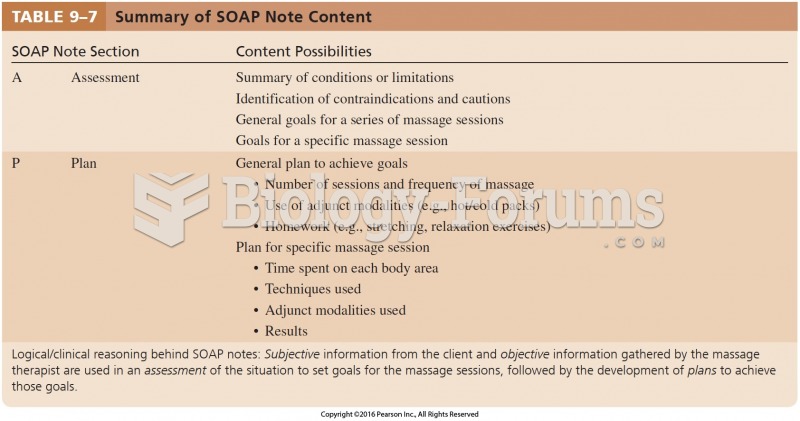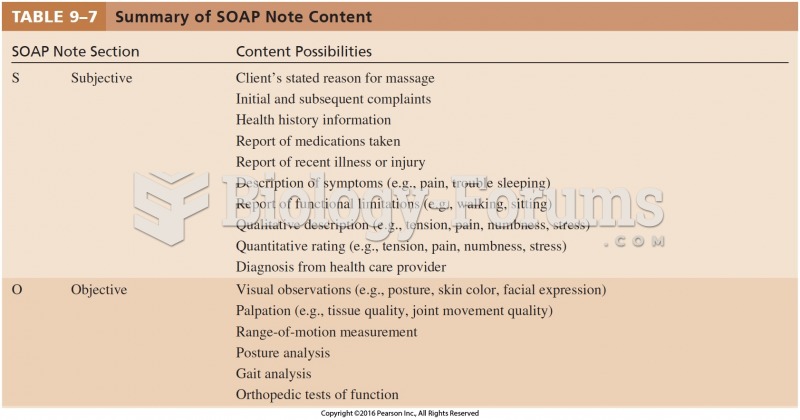Answer to Question 1
1,3,4,5
Rationale 1: Drugs can be excreted via feces.
Rationale 2: Drugs are not excreted through the gastric system.
Rationale 3: Drugs can be secreted glandularly.
Rationale 4: Drugs can be secreted via the lungs.
Rationale 5: Drugs can be excreted by the renal route.
Global Rationale: Drugs can be excreted via feces, the glandular system, the lungs, and the kidneys. They are not excreted through the gastric tissues.
Answer to Question 2
2,3
Rationale 1: There are many instances when a patient is prescribed more than one antibiotic at a time.
Rationale 2: Some drugdrug interactions are antagonistic, blocking or opposing the effects of the drugs taken.
Rationale 3: Some drugdrug interactions are synergistic, resulting in a potentiated effect.
Rationale 4: Prodrugs have no pharmacologic activity unless they are first metabolized to their active form by the body. This is not dependent on whether or not other drugs are present in the system.
Rationale 5: This question has nothing to do with first-pass effect.
Global Rationale: There are many instances when a patient is prescribed more than one antibiotic at a time. Some drugdrug interactions are antagonistic, blocking or opposing the effects of the drugs taken, and some are synergistic, resulting in a potentiated effect. Prodrugs have no pharmacologic activity unless they are first metabolized to their active form by the body. This is not dependent on whether or not other drugs are present in the system. This question has nothing to do with first-pass effect.







